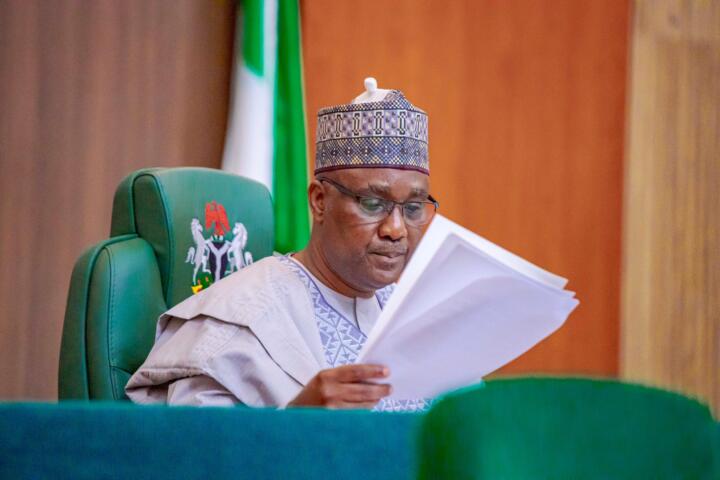Speaker of the House of Representatives, Abbas Tajudeen, has come out to say that Nigeria’s creative sector can create 2.7 million more jobs by the end of the year. He recently had his say while speaking at a public hearing on a bill to establish a National Institute for Film and Media Technology, and Nigerians have been reacting.
According to him, reliable research has shown that by 2025, the Nigerian entertainment industry could generate approximately $14.82 billion in revenue, an impressive boost from the $4 billion recorded in 2013.

Abbas added that the nation’s creative sector surely deserves praise for creating lots of business opportunities for young citizens, and establishing the National Institute for Film and Media Technology has become compulsory amid the rising need for access to quality technical and vocational education in Nigeria.
His words, “Data from the Nigerian Entertainment Conference (NECLive) underscores the economic potential of our creative industry. The report projects that by 2025, the Nigerian entertainment industry could generate approximately $14.82 billion in revenue. This is an impressive increase from the $4 billion recorded in 2013.
The Nollywood, which is globally recognized as the second largest film producer in the world (releasing over 2500 films a year), contributes up to 2.3per cent (N239 billion) to Nigeria’s Gross Domestic Product (GDP) according to an International Monetary Fund (IMF) report.
This employs over 1 million people. It is one of the priority sectors identified in the Economic Recovery and Growth plan of the Federal Government of Nigeria, with a planned $ 1 billion in export revenue.
The Nigerian music industry has been estimated to grow at a Compound Annual Growth Rate (CAGR) of 13.4 percent by 2021, with an estimated worth of about $73 million. Harnessing the talents of young Nigerians in the art and creative industry to build up a more resilient economy capable of creating wealth and generating jobs for our ever-growing population cannot, therefore, be a misplaced priority.
Available statistics verified from Nollywood sources indicate that it takes between 200 and 1000 people, or more, to produce one big-budget movie in Hollywood, while medium-budget films take between 50 and 200 people.
These include directors, producers, screenwriters, cinematographers, choreographers, editors, production designers, sound and visual effect teams, alongside support staff like production assistants, location managers, set designers, costumers, makeup and hair artists, special effects technicians, hype men, stuntmen, among many others.
The emergence of artificial Intelligence has brought increasing innovations in the creative sector, and the deployment of artificial intelligence tools will boost the impact of the sector in a world already governed by technology.
I understand that the creative sector is the second-largest employer of labour in the country, and has the potential to create an additional 2.7 million jobs by 2025. This indicates that the creative economy worldwide contributes over 6.1 per cent to global gross domestic product (GDP, averaging between two and seven per cent of national GDPs.”
Support InfoStride News' Credible Journalism: Only credible journalism can guarantee a fair, accountable and transparent society, including democracy and government. It involves a lot of efforts and money. We need your support. Click here to Donate
